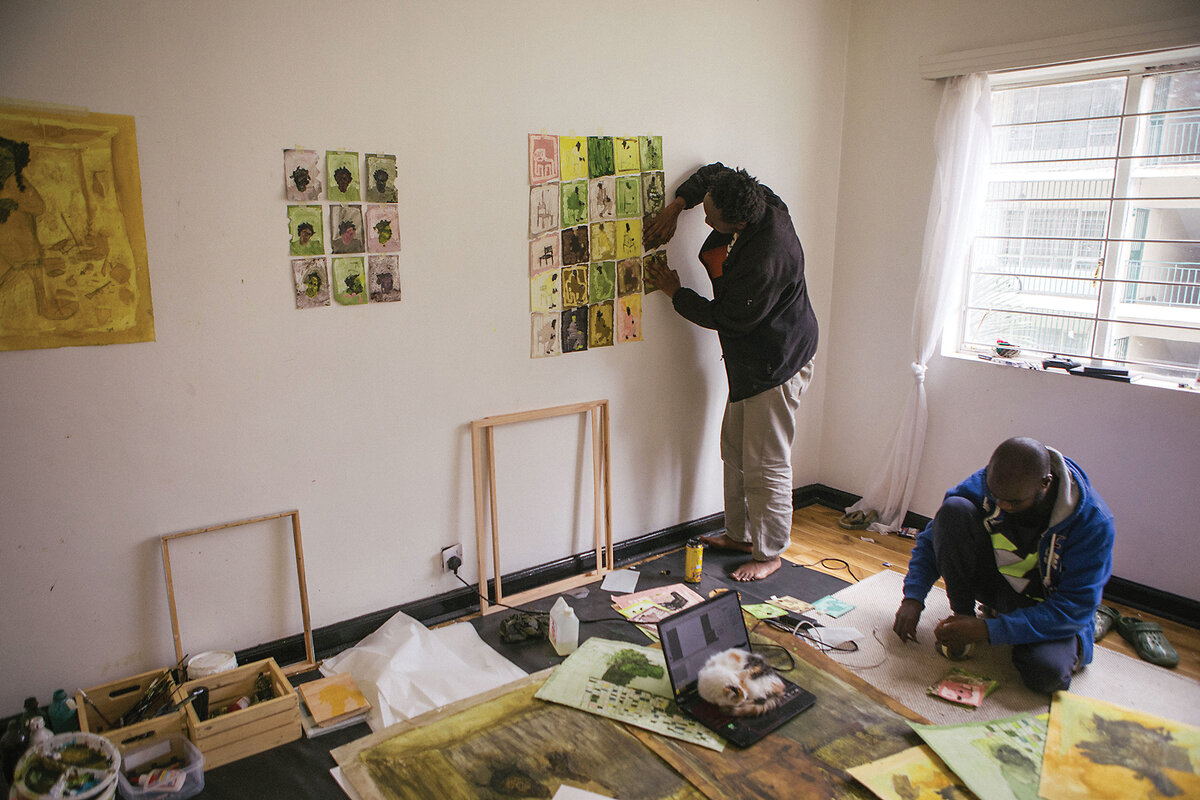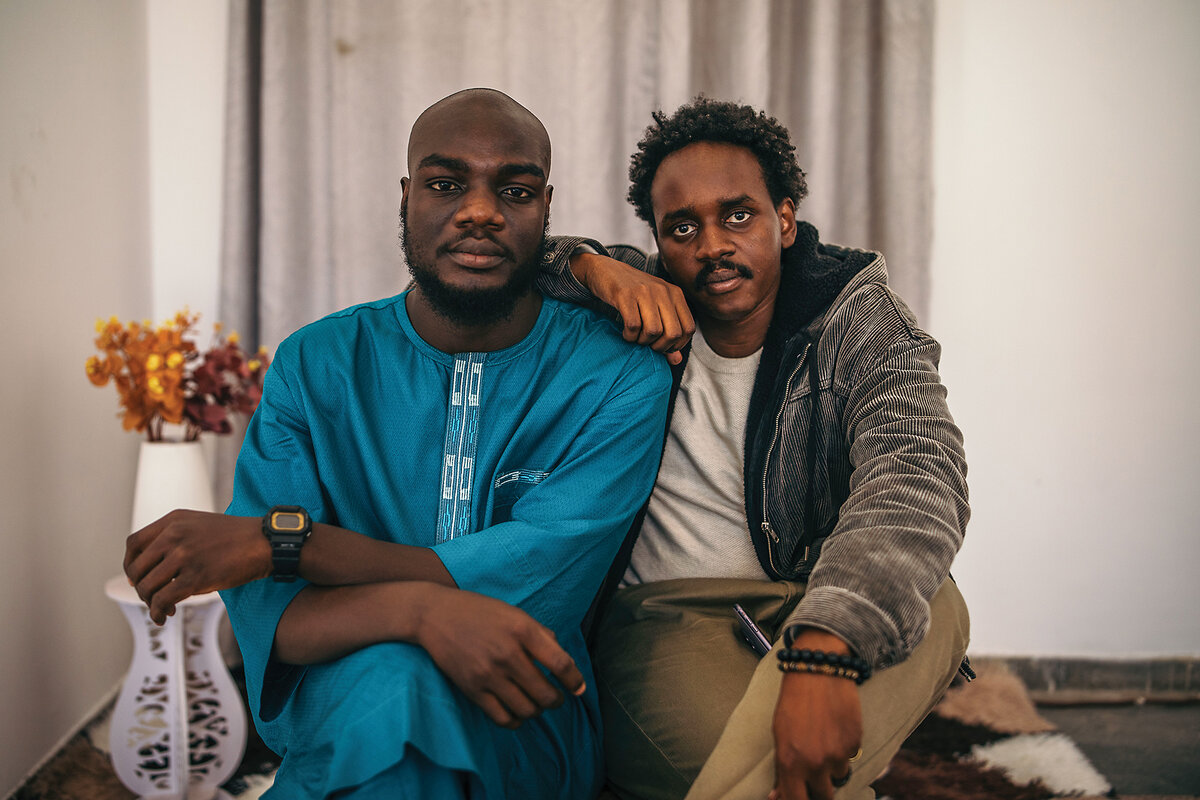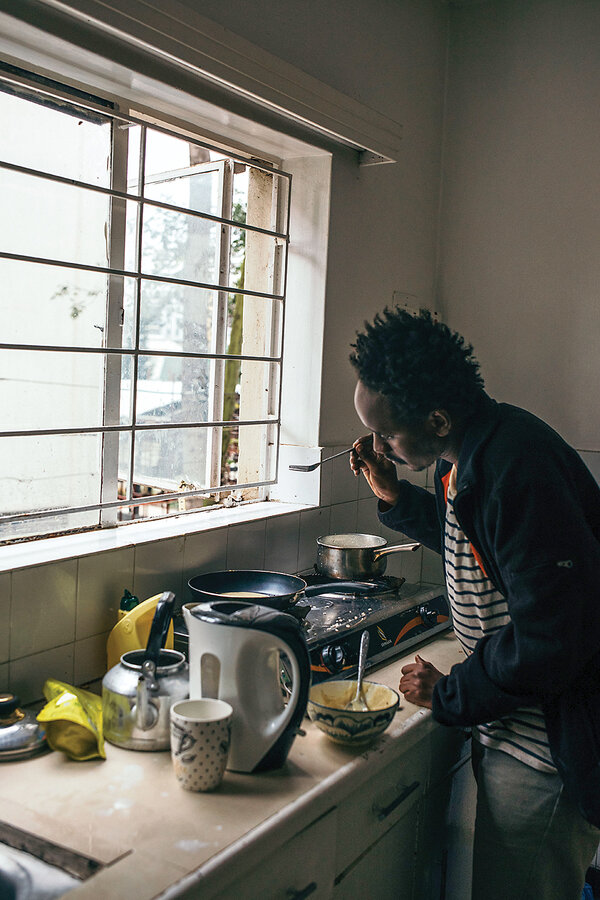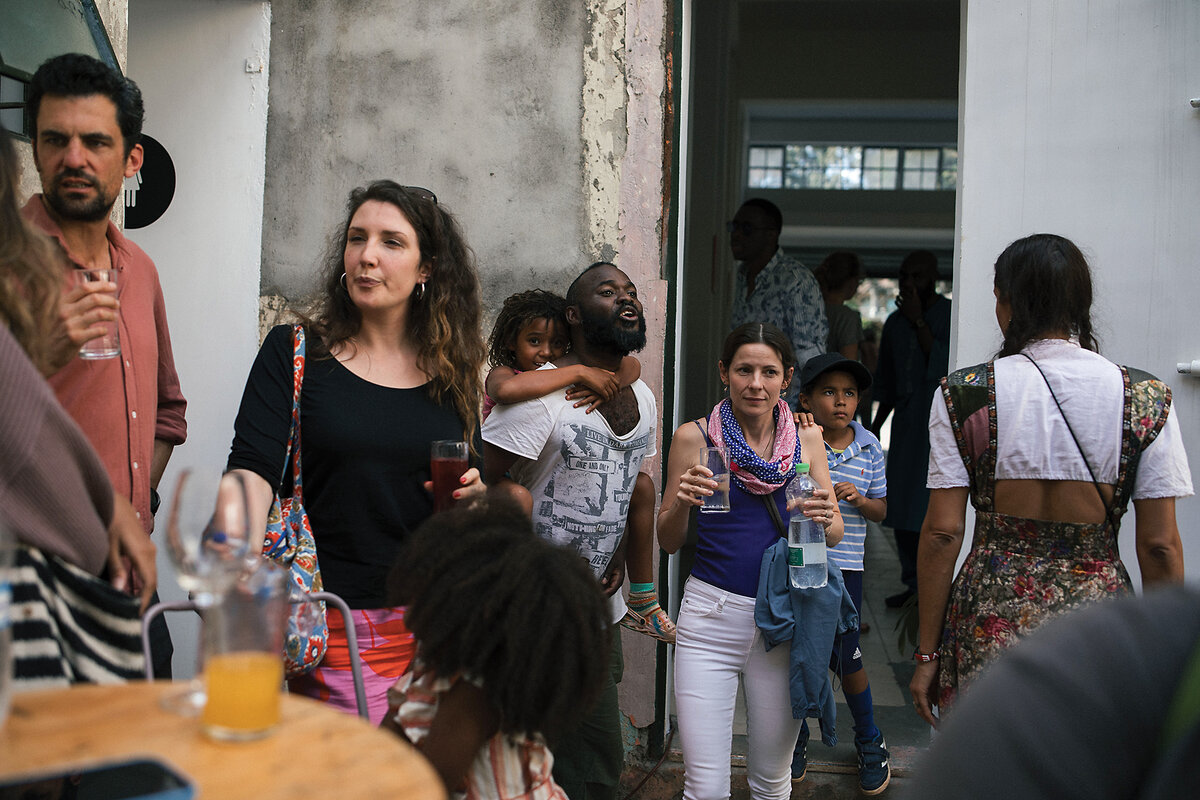Sudanese artists fleeing war find camaraderie displaying their work in Kenya
Loading...
| Nairobi, Kenya
Painter and architecture student Hozaifa Elsiddig was a couple of semesters away from graduation at Khartoum University when forces led by two of Sudan’s top generals began fighting in April 2023.
Khartoum, a vibrant capital brimming with galleries where Mr. Elsiddig had displayed his artwork, soon became the epicenter of a brutal civil war.
As many as 150,000 people have been killed and more than 11 million displaced. Mr. Elsiddig and Waleed Mohammed, also a painter from Khartoum, are among the estimated tens of thousands of Sudanese who have fled to Kenya.
Why We Wrote This
Two artists, displaced in Sudan’s civil war, have seen their bond deepen by showing their work in a new country. Their friendship is a bright spot in a war that has claimed 150,000 lives and driven more than 11 million people to leave Sudan.
The unconscionable situation back home has deepened the bond between the two artists as they connect in a new country.
Mr. Elsiddig and Mr. Mohammed had admired each other’s work at art shows in Sudan but didn’t meet until arriving in Nairobi, Kenya’s capital. They now share an apartment and studio space with a cat, Nova, who is the true boss of their home. Mr. Elsiddig paints with colors inspired by the tones of Khartoum – lots of earthy browns and desaturated greens. Mr. Mohammed’s art is influenced by Sudan’s history of conflict.
“I’m trying to capture the resilience of the Sudanese, reflect on memory, identity, the transformations of having to leave home,” Mr. Mohammed says.
He hopes his friend will stay in Nairobi, where they recently debuted their paintings to the Kenyan public. But he asks wistfully, “Who knows about the future?”
For more visual storytelling that captures communities, traditions, and cultures around the globe, visit The World in Pictures.









